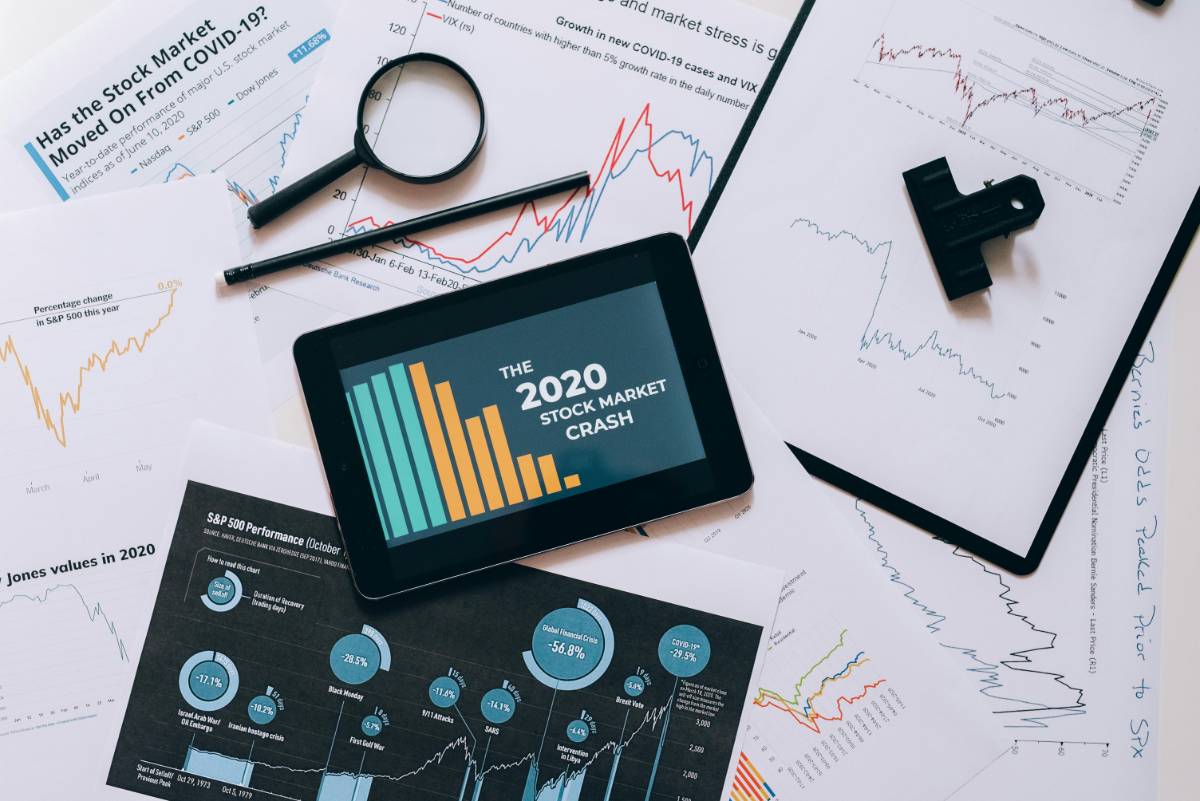
Understanding and Managing Risk in Your Investment Portfolio
 By Samantha Lee
By Samantha LeeInvesting always involves some level of risk, but understanding and managing that risk is essential to building a successful investment portfolio. This article explores the different types of risk you might face in your investments and provides strategies for managing them effectively.

What is Investment Risk?
Investment risk refers to the possibility that the value of an investment could decline over time or not meet expectations. It can arise from various sources, including market volatility, economic changes, or company-specific events. Managing risk is about minimizing the potential for loss while aiming for growth.
There are several types of risk in investing:
Market Risk: The risk that the entire market or a specific sector will decline in value.
Credit Risk: The risk that a company or government entity defaults on its obligations.
Interest Rate Risk: The risk that changes in interest rates will negatively affect bond prices or the broader economy.
Liquidity Risk: The risk that you cannot sell an investment quickly or at a fair price.

Currency Risk: The risk of losing value due to fluctuations in currency exchange rates.
Assessing Your Risk Tolerance
Before investing, it's important to assess your risk tolerance, which is your ability to withstand losses without making impulsive decisions. Your risk tolerance depends on several factors:
Time Horizon: The longer your investment horizon, the more risk you can typically afford to take. Investors with longer time horizons can weather market volatility better than those with short-term goals.
You might also like
1. How Interest Rates Impact ETF and Mutual Fund Performance2. Understanding and Managing Risk in Your Investment Portfolio3. The Basics of Passive Income: How to Make Money Work for You4. Understanding the U.S. Financial System: A Complete GuideFinancial Situation: Your overall financial health plays a key role in your risk tolerance. Those with a stable income and substantial savings may be able to take on more risk.
Emotional Capacity: Some people are naturally more comfortable with risk, while others may become stressed when facing significant losses. Assess your ability to stay calm during market fluctuations.

Diversifying Your Portfolio
One of the most effective ways to manage risk is by diversifying your investment portfolio. Diversification involves spreading your investments across different asset classes, such as stocks, bonds, real estate, and commodities. By holding a variety of investments, you reduce the likelihood that a downturn in one asset class will significantly impact your overall portfolio.
Here are some ways to diversify your portfolio:
Asset Class Diversification: Invest in a mix of asset classes, such as stocks, bonds, and real estate, to minimize the impact of any one class's performance on your portfolio.
Sector Diversification: Within the stock market, invest in different sectors (technology, healthcare, finance, etc.) to protect against sector-specific downturns.
Geographical Diversification: Consider international investments to avoid overexposure to the risks of any one country or region.

Understanding Volatility and Risk Management
Market volatility is a major driver of investment risk. It refers to the fluctuations in the market's prices over short periods. While volatility can create opportunities, it also increases the risk of loss.
To manage volatility, consider:
Investing for the Long Term: Long-term investors are less affected by short-term market swings, and the market tends to rise over long periods.
Avoiding Overreaction: Reacting to short-term fluctuations can lead to poor investment decisions. Stick to your long-term strategy and avoid panic selling.
Rebalancing Your Portfolio: Regularly review your portfolio to ensure it aligns with your risk tolerance and goals. Rebalancing helps maintain your desired asset allocation as market conditions change.
Risk-Reducing Strategies for Different Investment Types
Different types of investments come with varying levels of risk. Understanding the risk profile of each investment type can help you manage them more effectively:
Stocks: Stocks offer high potential returns, but they are also volatile. To reduce risk, consider diversifying your stock portfolio, focusing on blue-chip stocks, or investing in exchange-traded funds (ETFs) or mutual funds.
Bonds: Bonds are generally considered safer than stocks, but they are still subject to interest rate and credit risk. To reduce risk, invest in government bonds or highly rated corporate bonds.
Real Estate: Real estate can offer stable returns, but property values can fluctuate based on economic conditions. To reduce risk, invest in real estate investment trusts (REITs) or diversify across different property types and locations.
Using Risk-Management Tools
Several tools and techniques can help manage investment risk:
Stop-Loss Orders: A stop-loss order automatically sells a stock if its price falls below a certain level, limiting potential losses.
Hedging: Hedging strategies, such as options or inverse ETFs, can be used to offset potential losses in certain investments.
Professional Advice: Working with a financial advisor can help you develop a strategy to manage risk effectively based on your financial situation and goals.
Regularly Review Your Portfolio
As your financial situation and market conditions evolve, it’s essential to periodically review and adjust your investment portfolio. This helps ensure that your investments continue to align with your risk tolerance and goals. Some key factors to consider when reviewing your portfolio:
Life Changes: Changes in income, expenses, or family situations may necessitate adjustments to your portfolio.
Market Conditions: Fluctuations in the market or changes in economic conditions can impact your portfolio's risk level.
Retirement Planning: As you near retirement, you may want to reduce your exposure to high-risk investments and shift toward more stable assets.
Conclusion
Managing risk is a fundamental aspect of successful investing. By diversifying your portfolio, understanding your risk tolerance, and using risk-management strategies, you can protect your investments while still achieving your financial goals. Remember, all investments carry some level of risk, but with careful planning and discipline, you can reduce the potential for loss and maximize your chances of long-term success.
About the author
 By Samantha Lee
By Samantha LeeSamantha Lee is a seasoned finance writer with over 8 years of experience helping millennials and Gen Z take control of their money. With a background in economics and a passion for demystifying complex financial concepts, Ananya shares actionable tips on budgeting, investing, and building long-term wealth. Her mission is to make financial literacy accessible, relatable, and empowering — no jargon, just smart money moves.
More like this

Stock Buybacks: How They Influence Share Prices
Stock buybacks have become a common strategy for companies looking to boost share prices and reward investors. Understanding their impact can help investors make informed decisions.

Meme Stocks: Are They Making a Comeback?
Meme stocks took the financial world by storm in recent years, driven by online communities and retail investors. As market conditions shift, many wonder if these stocks are making a comeback.

Dividend Stocks vs. Growth Stocks: Where’s the Best Opportunity?
Investors often face a crucial decision when building their portfolios: Should they invest in dividend stocks for stability or growth stocks for higher returns? Understanding the differences can help in making the right choice based on financial goals and risk tolerance.

How Geopolitical Events Affect U.S. Stock Performance
Geopolitical events have a significant impact on the U.S. stock market, influencing investor sentiment, market volatility, and sector performance. Understanding these effects can help investors navigate uncertainty and make informed decisions.

AI and Automation: The Next Big Disruptors in the Stock Market
Artificial intelligence and automation are transforming industries, and the stock market is no exception. These technologies are reshaping investment strategies, trading mechanisms, and market dynamics at an unprecedented pace.

S&P 500 vs. Nasdaq: Where Should You Invest?
Investors often compare the S&P 500 and the Nasdaq when deciding where to allocate their funds. Understanding the differences between these indices can help you make a strategic investment choice based on your risk tolerance and financial goals.

Why Tech Stocks Are Leading the Market Again
Tech stocks are once again at the forefront of the market, driven by innovation, strong earnings, and investor optimism. As companies in the sector continue to expand their influence, understanding the reasons behind this surge can help investors make informed decisions.

The Impact of Federal Reserve Policies on the Stock Market
Federal Reserve policies play a crucial role in shaping the stock market. Interest rate decisions, quantitative easing, and regulatory measures directly impact investor sentiment and market performance. Understanding these effects can help traders and long-term investors navigate the evolving financial landscape.

Top Performing Stocks on Wall Street This Quarter
The latest quarter on Wall Street has seen significant movements, with some stocks outperforming expectations while others struggled to keep up. Understanding these trends can help investors make informed decisions moving forward.

U.S. Stock Market Outlook: What to Expect in 2025
As we move into 2025, investors are looking for insights into the U.S. stock market's potential trajectory. Market trends, economic policies, and global events will all play crucial roles in shaping investment opportunities.





